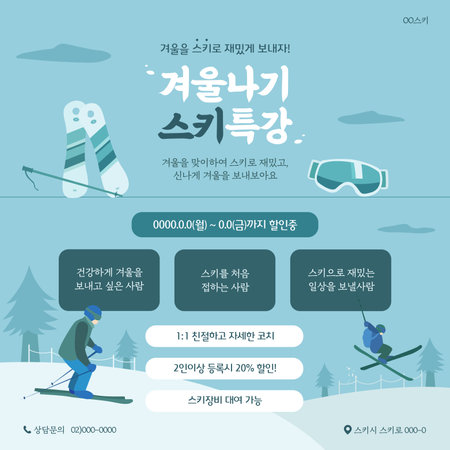1. Understanding the Layering System: Basics Every Backpacker Should Know
When youre heading out for lightweight backpacking anywhere in the U.S., knowing how to dress smartly can make or break your trip. The weather can shift quickly from sunny to stormy, and temperatures may change dramatically from one region or season to another. That’s why American backpackers rely on the three-layer system. This approach is all about combining different layers of clothing so you can adjust your comfort level as you hike, camp, or explore new trails.
What Are the Three Layers?
The classic layering system includes a base layer, mid layer, and shell (outer) layer. Each serves a unique purpose to keep you dry, warm, and protected from the elements. Here’s a breakdown:
| Layer | Main Function | Typical Materials | Examples |
|---|---|---|---|
| Base Layer | Moisture Management (Wicks sweat away) | Synthetic fabrics (polyester, nylon), merino wool | Long underwear, lightweight t-shirts |
| Mid Layer | Insulation (Traps body heat) | Fleece, down, synthetic fill | Fleece jackets, puffy vests, light insulated hoodies |
| Shell Layer | Weather Protection (Blocks wind/rain) | Waterproof-breathable membranes (Gore-Tex®, eVent®), treated nylons | Rain jackets, windbreakers, hard shells |
How Each Layer Works Across U.S. Seasons
Base Layer: No matter if you’re trekking through the damp Pacific Northwest or the dry Southwest deserts, your base layers job is to pull moisture off your skin so you stay dry and avoid getting chilled. Merino wool is popular for its odor-resistance and comfort; synthetics dry fastest for muggy summer hikes.
Mid Layer: When fall colors pop in New England or chilly mornings hit the Rockies, your mid layer keeps in warmth. Fleece is a go-to for most Americans because its lightweight and insulates even when damp. Down is warmer but loses loft if it gets wet—so save it for cold, dry days.
Shell Layer: Storms can roll in fast whether you’re in the Smoky Mountains or Cascades. Your shell blocks wind and rain so all that warmth stays inside. Modern shells are breathable enough for hiking but tough against rough weather—just make sure they fit over your other layers comfortably.
The Key: Mix and Match Based on Conditions
This system isn’t just for cold weather! Even summer hikes in high-altitude areas like Colorado can get chilly at night. The best part about layering? You can peel off or add pieces as needed throughout the day—keeping your pack light and yourself comfortable no matter where your adventure takes you.
2. Choosing Fabrics: What Works Best for Diverse American Climates
When it comes to staying comfortable while backpacking across the United States, picking the right fabrics is just as important as having the right layering system. From the muggy forests of the Southeast, to the arid deserts out West, and up into chilly alpine zones, your choice of base layers and insulation can make or break your trip. Let’s break down some of the most popular fabrics—merino wool, synthetic blends, and down—and see how they perform in different U.S. climates.
Popular Fabric Options for Backpacking Layers
| Fabric | Main Features | Best For |
|---|---|---|
| Merino Wool | Breathable, odor-resistant, insulates even when wet | Humid forests, variable temps, long trips without laundry access |
| Synthetic Blends (e.g., polyester) | Dries quickly, durable, budget-friendly | Wet weather, high-sweat activities, quick-drying needs |
| Down (natural or treated) | Super warm for weight, compressible, less effective when wet unless water-resistant | Dry cold conditions, alpine regions, lightweight packing |
How Different Fabrics Perform in Iconic U.S. Environments
Humid Southeastern Forests (e.g., Smoky Mountains)
If you’re hiking in places like the Appalachian Trail through North Carolina or Tennessee, you’ll likely deal with lots of sweat and moisture. Merino wool is a standout here because it wicks moisture away from your skin and keeps you feeling dry—even if the air is thick with humidity. Synthetics also work well since they dry fast after summer rain showers.
Dry Western Deserts (e.g., Utah’s Canyonlands)
In hot and arid spots like Arizona or Utah, synthetics shine thanks to their ability to wick sweat and dry super quickly under the sun. Merino works too but may feel warmer than necessary during daytime hikes. Down jackets are great for nighttime desert chills but make sure yours has a water-repellent treatment just in case of unexpected storms.
Windy Alpine Regions (e.g., Colorado Rockies)
High elevation means cooler temps and gusty winds year-round. Here, layering merino or synthetic base layers under a down or synthetic-insulated jacket keeps you warm without bulk. Down insulation is especially valued by ultralight backpackers for its warmth-to-weight ratio but remember that untreated down loses insulation power if it gets soaked by snow or rain.
Quick Tips for Picking Fabrics on Your Next U.S. Adventure:
- Southeast: Prioritize moisture management (merino or synthetics).
- West: Go light and breathable for day; pack insulated layers for night.
- Alpine: Use wind-resistant outer shells over insulating layers.
- Packing Light: Mix and match based on forecasted temps and expected conditions.

3. Adapting Layers for Different Seasons and Regions
Layering for Spring in the Pacific Northwest
Spring in the Pacific Northwest is famous for its unpredictable weather—think chilly mornings, sudden rain showers, and even sunshine by the afternoon. Your layering strategy should focus on quick adjustments and staying dry.
| Layer | Recommended Item | Purpose |
|---|---|---|
| Base Layer | Synthetic or Merino Wool Long-Sleeve Top | Wicks moisture and dries fast |
| Mid Layer | Lightweight Fleece or Puffy Jacket | Adds warmth without bulk |
| Shell Layer | Breathable Rain Jacket (with pit zips) | Keeps you dry during rain showers |
Hot Summers in the Rockies
The Rocky Mountains can bring intense sun during the day and cool temps at night. Lightweight, breathable, and sun-protective layers are key, along with a warm piece for after sundown.
| Layer | Recommended Item | Purpose |
|---|---|---|
| Base Layer | Synthetic Short-Sleeve Tee or Sun Hoodie (UPF rated) | Keeps you cool and protects from UV rays |
| Mid Layer (evening) | Ultralight Down or Synthetic Jacket | Adds warmth when temps drop at night or at higher elevations |
| Shell Layer (optional) | Packed Emergency Rain Shell | Covers you in case of surprise storms |
Crisp Autumns in New England
Fall hikes in New England feature fluctuating temperatures and frequent wind. Focus on insulation and blocking out chilly breezes while still managing sweat as you hike.
| Layer | Recommended Item | Purpose |
|---|---|---|
| Base Layer | Merino Wool Long-Sleeve Top & Bottoms | Keeps you warm and comfortable next to skin, even if damp from sweat or drizzle |
| Mid Layer | Puffy Vest or Fleece Pullover | Adds core warmth without overheating your arms as you move uphill |
| Shell Layer | Windbreaker or Softshell Jacket | Cuts the wind chill and adds light water resistance for misty trails |
Variable Shoulder Seasons in National Parks
The shoulder seasons (early spring and late fall) in U.S. national parks can throw just about every type of weather at you: snow flurries, rain, sun, and gusty winds. Versatility is everything—bring layers that mix and match easily.
| Layer | Recommended Item | Purpose |
|---|---|---|
| Base Layer | Synthetic or Merino Wool (top & bottom) | Makes it easy to add or subtract warmth as needed |
| Mid Layer(s) | Puffy Jacket &/or Grid Fleece | You can use both together or just one depending on conditions |
| Shell Layer | Packed Hardshell Rain Jacket/Pants | Covers you head-to-toe against rain, snow, or strong wind |
Quick Reference: Regional Layering Strategies Summary Table
| Region/Season | Main Weather Concern | #1 Must-Have Layer |
|---|---|---|
| PACIFIC NORTHWEST SPRING | SUDDEN RAIN SHOWERS | BREATHEABLE RAIN JACKET |
| ROCKIES SUMMER | SUN/UV EXPOSURE; COOL NIGHTS | SUN HOODIE (DAY), ULTRALIGHT PUFFY (NIGHT) |
| NEW ENGLAND AUTUMN | TEMPERATURE FLUCTUATIONS/WIND | Puffy Vest/Fleece + Windbreaker |
| NATIONAL PARKS SHOULDER SEASON | MIXED CONDITIONS (RAIN/SNOW/SUN) | Packed Hardshell Rain Gear & Versatile Midlayer(s) |
Pro Tips:
- Always check current weather reports before heading out.
- Be ready to swap layers as conditions change throughout the day.
- Choose lightweight options that pack down small to save space in your backpack.
4. Ultralight Layering: Tips for Cutting Weight Without Sacrificing Comfort
Choose Multi-Purpose Layers
When you’re planning a lightweight backpacking trip across America’s diverse landscapes, from the Appalachian Trail to the Pacific Crest Trail, every ounce counts. One of the smartest ways to cut weight is to choose clothing layers that serve more than one purpose. Look for items that can be worn in multiple situations—like a fleece that works as both your hiking layer and your camp jacket, or a rain shell that doubles as wind protection on chilly ridgelines.
Examples of Multi-Use Layers
| Layer Type | Primary Use | Secondary Uses |
|---|---|---|
| Synthetic T-Shirt | Base Layer | Sleepwear, Sun Protection |
| Lightweight Fleece Pullover | Insulation | Pillow, Extra Warmth at Camp |
| Rain Jacket | Weather Protection | Windbreaker, Emergency Shelter |
| Nylon Shorts | Hiking Bottoms | Swim Trunks, Sleep Shorts |
| Buff or Neck Gaiter | Head/Neck Coverage | Hat, Sweatband, Pot Holder |
Minimize Redundancy in Your Kit
Avoid packing duplicate items “just in case.” Instead, focus on having one item per function. For example, you don’t need two different fleeces—one well-chosen midlayer should do the trick for most three-season trips. If you’re worried about getting wet or cold, plan to dry out gear at camp rather than carrying spares.
Packing Smart: The Essential Three-Layer System
| Layer Name | Description |
|---|---|
| Base Layer | Moisture-wicking shirt and underwear; quick-drying synthetics or merino wool. |
| Insulating Layer | Puffy jacket (down or synthetic) or lightweight fleece for warmth during rest stops and chilly nights. |
| Shell Layer | Waterproof-breathable rain jacket; protects from rain and wind on exposed trails. |
Packing Strategies for Thru-Hikes and Backcountry Trips
If you’re tackling popular routes like the John Muir Trail or Colorado Trail, keep your pack light by sticking to these key strategies:
- Select neutral colors so each piece matches with others (no need for extra clothes).
- Launder clothes in streams or with a pack towel—don’t bring multiples.
- If temperatures vary widely, add a lightweight wind shirt or vest instead of another full jacket.
- Pare down socks and underwear to just two pairs each: one to wear, one to wash/dry.
- If you need extra warmth at night, use your rain gear over base layers inside your sleeping bag.
- Always adjust your kit based on forecasted weather and trail conditions—lighter kits are best for drier seasons and lower elevations.
Your Ultralight Checklist:
- One base layer top & bottom (synthetic or wool)
- One insulating layer (light puffy or fleece)
- One shell/rain layer (jacket & pants if necessary)
- Two pairs of socks/underwear (rotate daily)
- Buff/hat/gloves as needed for season/trail location
- No unnecessary duplicates!
Packing smart lets you hike farther with less fatigue—and keeps you comfortable from spring in Shenandoah National Park to fall in the High Sierra.
5. Real-World Scenarios: Layering Strategies from the Trail
To help you dial in your layering system for lightweight backpacking, lets explore real-world scenarios from popular U.S. backpacking destinations and see how layering plays out on the trail. Whether you’re hiking the Pacific Crest Trail in California, trekking through Colorado’s Rockies, or exploring the Appalachian Mountains, understanding how to adjust your layers will keep you comfortable and safe.
Scenario 1: Spring Backpacking in the Pacific Northwest
Weather in the Cascades can shift quickly between sun, rain, and chilly winds. Here’s a sample layering strategy:
| Layer | Morning (Cool/Damp) | Midday (Warm/Sunny) | Evening (Cool/Wet) |
|---|---|---|---|
| Base Layer | Lightweight Merino Tee | Lightweight Merino Tee | Lightweight Merino Tee |
| Mid Layer | Synthetic Hoodie | (Packed Away) | Synthetic Hoodie |
| Insulation | Puffy Vest (if cold) | (Packed Away) | Puffy Vest |
| Shell Layer | Rain Jacket | (In Pack) | Rain Jacket if raining/windy |
Scenario 2: High-Elevation Summer Hikes in Colorado Rockies
Nights can get cold even in July, while days are often hot. Here’s a way to layer up:
| Layer | Dawn/High Elevation Start | Noon/Sun Exposed Ridge | Dusk/Basecamp |
|---|---|---|---|
| Base Layer | Synthetic T-Shirt | Synthetic T-Shirt | Synthetic T-Shirt (change if wet/sweaty) |
| Mid Layer | Fleece Pullover | (Packed Away) | Fleece Pullover or Puffy Jacket |
| Insulation | Puffy Jacket (briefly) | (In Pack) | Puffy Jacket + Beanie |
| Shell Layer | (In Pack) | (In Pack) | (Use if windy or stormy) |
Scenario 3: Fall Hiking on the Appalachian Trail (AT)
The AT sees chilly mornings, warm afternoons, and possible rain.
| Layer | Dawn/Foggy Start | Noon/Uphill Climb | Late Afternoon/Chill Sets In |
|---|---|---|---|
| Base Layer | Synthetic Long Sleeve Top & Bottoms | T-Shirt or Sleeves Rolled Up | Synthetic Long Sleeve Top & Bottoms (dry pair if needed) |
| Mid Layer | Slim Fleece Zip-Up or Wool Sweater | (Packed Away) | Slim Fleece Zip-Up or Wool Sweater back on as temps drop |
| Insulation | (Not needed unless cold snap) | (In Pack) | Puffy Vest or Light Down Jacket |
| Shell Layer | Ultralight Rain Shell (if drizzly) | (In Pack) | Rain Shell if weather turns wet or windy |
Trail Tips for Effective Layering
- Always keep a dry base layer for camp; don’t hike in your sleeping clothes .
- Use zippers , vents , and sleeve adjustments to fine – tune your temperature .
- Avoid cotton ; it dries slowly and can chill you fast .
- Don’t be afraid to stop and swap layers — comfort is worth those extra seconds !
Regional Considerations
Remember , U . S . climates vary widely : desert hikes call for sun protection layers , while mountain adventures demand wind and moisture defense . Adjust your kit to fit where you ’ re headed , and always check local forecasts before you pack !


